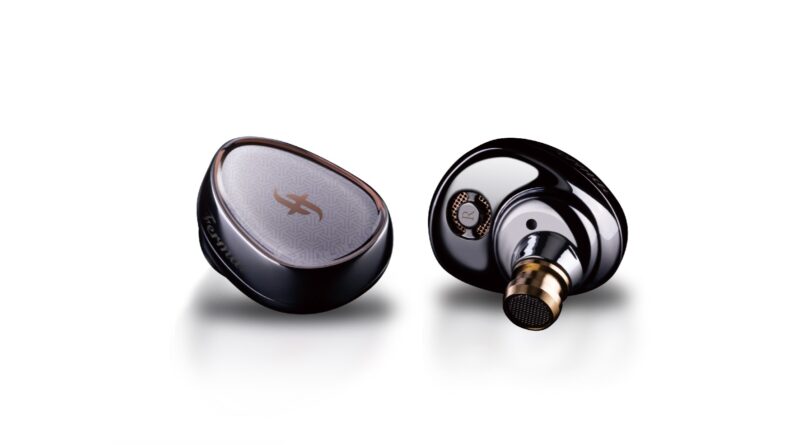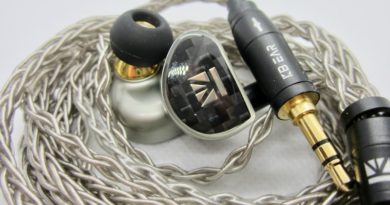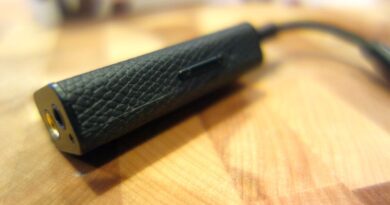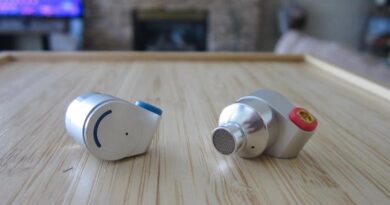Simgot EA1000 Review – Hitting A Strike
For a couple of years at least Simgot have made a commendable effort on evolving their IEM range, and EA1000 is a very interesting item in their current offering. Priced just above 200€, they can be found on the manufacturer’s site, or in stock on multiple distributors.
In this Article
At-a-glance Card
| PROs | CONs |
| Nice timbre. | Low mids & male vocals a bit too lean to sound fully organic. |
| Well calibrated tonality good for acoustic music and more. | Modest but perceivable metallic sheen in the trebles. |
| Well done, energetic, airy yet inexcessive highmids and treble. | Modest stage depth. |
| Very good separation, layering and microdynamics. | Worthless stock eartips. |
| Good stage extension. | No balanced cabling option. |
| Good detail retrieval. | |
| Replaceable nozzles offering interesting tuning variations. | |
| Very good build. | |
| Super comfortable to wear. |
Full Device Card
Test setup and preliminary notes
Sources: AudioQuest DragonFly Cobalt / Chord Mojo / E1DA 9038D, 9038SG3 / Questyle QP1R, QP2R, M15, CMA-400i / Sony WM-1A – Final Type-E silicon tips – Dunu DUW-02S cable – lossless 16-24/44.1-192 FLAC + DSD 64/128/256 tracks.
I am not writing these articles to help manufacturers promote their products, even less I’m expecting or even accepting compensation when I do. I’m writing exclusively to share my fun – and sometimes my disappointment – about gear that I happen to buy, borrow or somehow receive for audition.
Another crucial fact to note is that I have very sided and circumscribed musical tastes: I almost exclusively listen to jazz, and even more particularly to the strains of post bop, modal, hard bop and avantgarde which developed from the late ’50ies to the late ’70ies. In audio-related terms this implies that I mostly listen to musical situations featuring small or even very small groups playing acoustic instruments, on not big stages.
One of the first direct consequences of the above is that you should not expect me to provide broad information about how a certain product fares with many different musical genres. Oppositely, you should always keep in mind that – different gear treating digital and analog sound in different ways – my evaluations may not, in full or in part, be applicable to your preferred musical genre.
Another consequence is that I build my digital library by painstakingly cherry-pick editions offering the least possible compression and pumped loudness, and the most extended dynamic range. This alone, by the way, makes common music streaming services pretty much useless for me, as they offer almost exclusively the polar opposite. And, again by the way, quite a few of the editions in my library are monoaural.
Additionally: my library includes a significant number of unedited, very high sample rate re-digitisations of vinyl or open-reel tape editions, either dating back to the original day or more recently reissued under specialised labels e.g. Blue Note Tone Poet, Music Matters, Esoteric Jp, Analogue Productions, Impulse! Originals, and such. Oppositely, I could ever find an extremely small number of audible (for my preferences) SACD editions.
My source gear is correspondigly selected to grant very extended bandwidth, high reconstruction proweness, uncolored amping.
And finally, my preferred drivers (ear or headphones) are first and foremost supposed to feature solid note-body timbre, and an as magically centered compromise between fine detail, articulated texturing and microdynamics as their designers can possibly achieve.
In terms of presentation, for IEMs I prefer one in the shape of a DF curve, with some very moderate extra pushup in the midbass. Extra sub-bass enhancement is totally optional, and solely welcome if seriously well controlled. Last octave treble is also welcome from whomever is really able to turn that into further spatial drawing upgrade, all others please abstain.
Signature analysis
Tonality
EA1000 are tuned following a wiiide V shape, and feature a replaceable “tuning nozzles” system to offer interesting variations of the tonal balance on top. There is a slight metallic sheen coming up on the high trebles, also depending on the source material.
No matter the nozzle choice the timbre stays more or less unchanged: mid-bodied notes across the board with a sole exception for lean-ish low mids, and a commendable overall organicity.
The various nozzles deliver different sonic nuances vis-a-vis their building materials (Gold ones are made of brass), their length, their front mesh and of course the sponge or cloth they may be filled with. Here’s a description of the differences each one brings to the board.
Red nozzle : midbass is somewhat “bloomy”, its notes tend to “expand” a little bit; highmids and treble are instead near-precisely the tonality I prefer. Too bad for that bass, which is not as organic as it should.
Gold nozzle: midbass is evidently more combed, and I like it better, but so is treble too, while highmids are more forward. Guitars and femaie vocals are probably best expressed here, but stage height is cut off, and air and spatiality take a hit.
Black nozzle: midbass is the same as Gold, while high mids and treble are very similar to Red, with possibly a slight tad more energy on one hand, and a bit less depth on the other.
It’s a toss between Black and Red for my particular tastes, and well… I experimented further and found out that in the end I prefer Red with a -1,5dB Q=1 correction on 90Hz to “clean” those doublebass vibrations off. And yes, I’m a “never happy dog” !
Sub-Bass
Sub bass is extended but not elevated. Rumble is present but not imposing itself, which is perfectly good for my library but may be a point of contempt for other musical tastes.
Mid Bass
Mid bass notes are very well rendered by EA1000, with the Red nozzle adding a bit more butter compared to the other two alternatives.
While such makes them a bit more greasy than they should to be called perfectly organic when it comes to render acoustic bass instruments, the effect is indeed not excessive so not only it is welcome in conjunction with many musical genres, but also not necessarily unwelcome even to hardbop or modal lovers.
It’s quite easy to guess – or hope? – that the high quality of EA1000’s mid bass rendering is also directly dependent on that uncommon “Passive Radiator” device inside the box, and anyhow this is what Simgot’s marketing insists on making us believe.
Mids
Mid frequencies are a bit of a mixed bag here. They are recessed in their central part, and somewhat lean in their lower segment.
High mids however go up in power quite rapidly between 1 and 2KHz which is where they give their best. As a consequence, and simplifying maybe a bit too much, EA1000 render guitars and sax tenors better than pianos, for example.
Male Vocals
Vis-a-vis what I just noted about mids in general, male vocals are a territory where EA1000 don’t fare particularly well: especially baritone and bass voices come out perceivably leaner than real, and that’s a common trait no matter the nozzle installed.
Female Vocals
Opposite of the male case, female vocals benefit from a better tonal situation on EA1000 and in facts come across very naturally colored, bodied, detailed and very pleasing at all times.
Highs
Treble is one of the areas where EA1000 do best, and at the same time one where the 3 different nozzles apply more significant variations.
As I anticipated above, to my tastes Red nozzles nail it, period: “Red” trebles are energetic yet still not excessively so, bodied, very detailed, and they “breath” a lot of air in terms of spatiality. Their sole real downside is that perceivable metallic aftertaste coming up once too often – it’s not too strong, nor too fastidious, but it’s undoubtedly there to make the final result just a bit less than fully positive (what a pity).
Golden nozzles furtherly strengthen highmids and low trebles, while also taking some of that magic air quantity off. Black nozzles are very, very similar to Red up there, juts a tad less airy (but less so compared to Gold).
Technicalities
Soundstage
Width and height are very extented, much beyond what you normally get on similar priced IEMs. Depth is “only” barely above average, always referred to the same category.
Imaging
Macrodynamics are very well executed on EA1000, with always precise instrument positioning on stage.
Details
EA1000 offer very good detail retrieval in the high mids and low treble.
Retrieval is good on midbass too, where the concessions made to drama and musicality just rarely steal something off note contouring. As my few readers know I’m noticing this as I’m biased towards acoustic music.
Instrument separation
Separation, layering and microdynamics are all no doubt EA1000’s excellence points. It’s indeed very uncommon to find better around, not only at this price point, but much higher too.
Driveability
EA1000 are easy to drive in terms of sound pressure output thanks to a good sensitivity (109 dB/mW) paired with a not too low impedance (16 Ohm). Their sound quality scales with amping quality however – I suspect this may have to do with that passive radiator device.
Physicals
Build
EA1000 offer a very convincing feeling of solidity and reliability. Their full metal housings are obviously impervious to reasonable physical damages (and possibly to some unreasonable ones, too).
Faceplates are covered by what are declared as “crystal” (!) glasses. I couldn’t assess whether it’s actually crystal, all I can say is it does not appear to be easily scratched, and when in contact with a metal tip it does not tend to sound “plastic”.
For the benefit of those who pay particular attention to aesthetics it should be noted that the housings’ chrome finish and of the “crystal” faceplates are very well taken care of, and that will help them feel alive in their compulsion to continually wipe every surface clean of fingerprints.
Fit
EA1000’s housings fit me near-perfectly in terms of size & shape. Nozzles are not too short, and they are mounted on a sort of protruded portion of the shell. Eartips of the right size easily get a grasp – even more than a seal – onto my canals’ internal surfaces, with this contributing to a firm seating once properly worn – all this in spite of the earpieces not being precisely “featherweights”.
Comfort
As mentioned above EA1000 sit well in my outer ears and prove perfectly comfortable to wear, even for prolonged periods of time.
Isolation
Given the housings’ shapes and calibrated dimensions, EA1000 shells form an important isolation barrier. The multiple vents, and most of all the wide opening corresponding to the passive radiator do of course take steps in the opposite direction but I would say that the overall result is more than satisfactory anyhow.
Cable
EA1000 are sold with a replaceable non-modular-terminated 3.5mm cable. Its aesthetics and haptics are more than ok but I could not conduct my usual comparison tests round-robining amongst my various sources as most of them got balanced outputs. I can’t consequently offer an opinion on the stock cable’s sound performance. For my tests I paired a Dunu DUW-02S cable.
On a more commercial note, given the recent (2-3 years) market evolutions, the fact that an otherwise “premium” package like EA1000’s does not offer a balanced termination cable option – be it in form of available choice at order time or of modular termination system – is to be reported as a negative remark in the general evaluation.
Specifications (declared)
| Housing | High density alloy metal body structures, with CNC-made external engravings, and uneven surface inside the chamber |
| Driver(s) | One 10mm full-range dual-magnet dual cavity sputter deposition “purple-gold” diaphragm dynamic driver plus one 6mm lightweight composite diaphragm passive radiator |
| Connector | 2pin 0.78mm, recessed connectors. A notch is present to guarantee plugging terminals following correct polarity |
| Cable | 1.2m high purity silver-plated OFC Litz structure cable, with fixed 3.5mm single ended termination |
| Sensitivity | 127 dB/Vrms = 109 dB/mW |
| Impedance | 16 Ω |
| Frequency Range | 10Hz – 50Khz |
| Package & Accessories | 2 sets of 3 pairs (S/M/L) silicon tips, 3 pairs of tuning nozzles, spare colored washers for nozzles, leatherette solid carrying case |
| MSRP at this post time | $ 219,99 |
Comparisons
Tanchjim Oxygen (€ 190)
Oxygen feature a bit softer attack, yielding into less punchy bass and overall silkier, more relaxing timbre. Oxygen’s tonality is overall more organic, exquisitely neutral – which may of course be a love-hate thing in some cases. Their midrange is not recessed resulting in much better vocal and guitars rendition. Oxygen’s trebles are less energetic, airy and sparkly.
Stage on Oxygen is a bit narrower, perceivably less high, but much deeper. Lastly, Oxygen are much more demanding in terms of source power.
Intime Miyabi Mk-II (€170 + import costs)
You can find my Miyabi review here. Miyabi Mk-II differ from Miyabi insofar as their mids are less upfront, and their timbre is dryer and clearer, and that’s why I’m taking them as a more appropriate comparison to EA1000 here.
Midbass elevation is similar between Miyabi Mk-II and EA1000, but EA1000 have a cleaner timbre, better punch and sound more resolving there. In a nutshell, bass is technically better on EA1000, very possibly due to their Passive Radiator thing.
Miyabi Mk-II’s mids are way more bodied, and obviously more organic. Trebles are overall better on Miyabi Mk-II, less upfront but more refined. Opposite to bass, while good on EA1000 treble is, that is better on Miyabi, likely consequece of the fantastic deeds of Watanabe-sama’s VST driver,
Miyabi Mk-II cast a slightly narrower stage, same height, but way better depth. They require a bit more power than EA1000 but the difference is not big on this.
Ikko OH1S (€ 150)
The two offer very similar timbre, and similar general tonality. Bass is less forward and less punchy on OH1S (almost ruler-flat, indeed), which also contributes to their mids be felt as less recessed, more “meaningful”, and I’m talking about both low and middle mids.
Trebles are more energetic on EA1000, which is an advantage at times, but a disadvantage when this pairs negatively with some tracks or musical genres. Separation is similar on the two models, layering is a bit better on EA1000 due to better microdynamics. Stage is narrower on OH1S, but deeper.
Final A5000 (€ 299)
A5000’s presentation is more markedly V-shaped compared to EA1000’s. Both offer a dry timbre with little concession to warmth, with A5000 being by a whiff the coldest of the two.
Bass are a tie game, both models offering very significant quality in the region. Mids are also similar, in this case meaning both models choose to let them in second-layer position, accepting sub-organic leanness. Trebles are better on EA1000, with A5000 too often scanting into excess and sibilance, and delivering less air.
Technicalities – all of them – are in favour of A5000, sometimes vastly too. Stage is wider and deeper on A5000, just a bit less high. Layering and separation is macroscopically better on A5000. Ditto for detail retrieval, which is “sensational” on A5000.
Considerations & conclusions
Simgot hit a strike with EA1000, there’s very little doubt about this. Their nice timbre and even more their greatly calibrated tonality are of absolute value. Technicalities are also extremely good, with a particular mention deserved by layering and microdynamics. Their less shiny aspects are in the end very few in comparison.
As you may or may not know I’m quite selective, and that’s why I’m pleased to state that EA1000 fall amongst the very IEMs I find recommendable around the €200 mark. For that, I’m double thankful to Simgot for the review opportunity I’ve been offered.
Our generic standard disclaimer.







